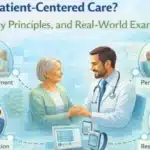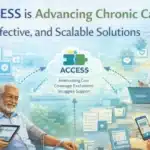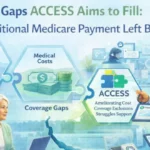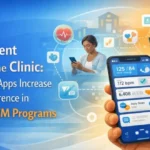Remote Therapeutic Monitoring (RTM) Use Cases: How Providers Can Improve Care & Reimbursement
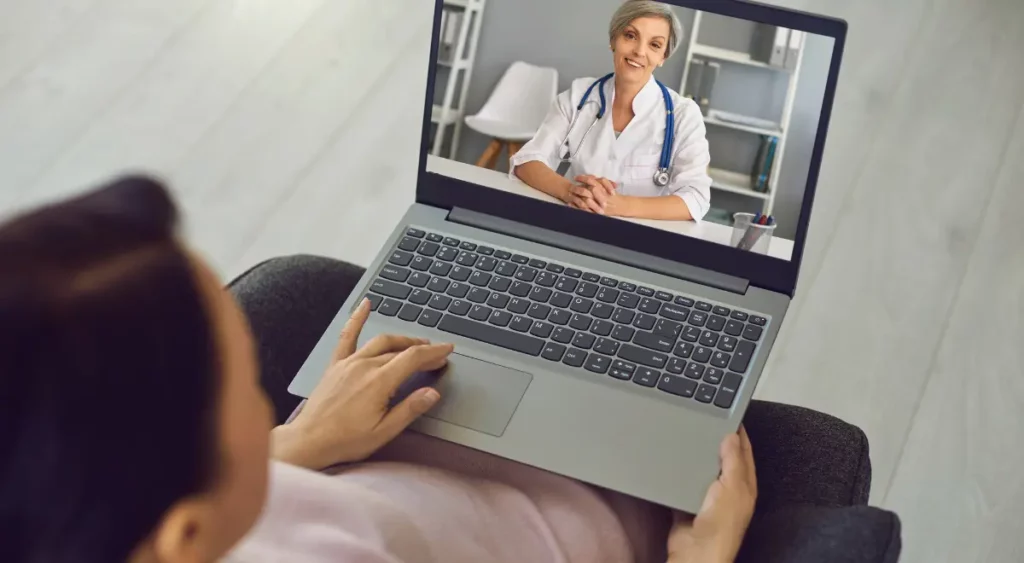
As digital transformation accelerates, healthcare systems are exploring ways to deliver therapy-focused care remotely, especially for musculoskeletal and behavioral health conditions.
The transition to virtual care is happening quickly, and Remote Therapeutic Monitoring (RTM) is emerging as one of the most influential and innovative digital health platform for patient care outside of a clinical environment. RTM is designed to monitor musculoskeletal conditions , respiratory issues, and other non-physiological data” through software and connected devices, is providing measurable value to both providers and patients.
At HealthArc, we’ve seen how RTM can boost care delivery, improve health outcomes, and increase provider revenue and reimbursements. In this blog, we’ll explore the core RTM use cases and its future potential in the healthcare industry.
Table of Contents
ToggleWhat Is Remote Therapeutic Monitoring (RTM)?
Remote Therapeutic Monitoring (RTM) is a CMS-defined service that allows providers to collect and assess non-physiological data from patients, including – but not limited to anxiety, depression, pain, fatigue, sleep, appetite, exercise, and medication and therapy adherence.
Whereas Remote Patient Monitoring (RPM) focuses on measuring specific physiological metrics (e.g. heart rate, glucose levels, etc.), RTM is designed to assess therapy adherence, response to treatment, and musculoskeletal or respiratory conditions.
RTM services are billed using CPT codes 98975-98981 and support data collection through general devices and software (not necessarily FDA-approved medical devices). As a result, RTM can be implemented more broadly including, but not limited to, patients with chronic pain, orthopedic conditions, or post-surgical recovery needs.
RTM Use Cases for Providers
Providers across various healthcare disciplines are adopting RTM to manage chronic conditions, deliver personalize care, and strengthen patient engagement. Below are the key RTM use cases that are transforming clinical workflows and expanding reimbursement opportunities.
- Orthopedic Practices and Post-Surgical Recovery
Orthopedic surgeons and physical therapists are increasingly using RTM to track recovery following procedures such as joint replacements or rotator cuff repairs. With RTM, patients can log pain levels, mobility progress, and therapy adherence through digital platforms. Providers receive real-time data, enabling them to adjust therapy plans and identify complications early.
-
- Reduced readmissions and surgical complications
- Improved insight into rehabilitation and medication adherence
- Automated patient engagement without in-person visits
- Chronic Pain Management
Pain specialists can use RTM to monitor how patients respond to prescribed therapies (e.g., physical therapy, medications, or alternative treatments). Patients can track pain scores & activity levels, providing clinicians with valuable, longitudinal data to assess treatment outcomes.
Clinical value:
-
- Provides objective insights that the clinician can use to fine-tune & adjust patient pain management regimens
- Enables closer monitoring of opioid use and potential dependency.
- Increases a patient’s accountability for home-based therapy programs
- Primary Care for Respiratory Conditions
Primary care clinicians caring for patients with chronic respiratory diseases such as asthma or COPD can utilize RTM to collect symptom data, monitor inhaler usage and evaluate therapy effectiveness. This promotes early intervention when symptoms begin to escalate.
Benefits for providers:
-
- Improved adherence to prescribed medications
- Reduced ER visits and hospitalizations
- Enhanced instruction on inhaler usage and symptom tracking
- Physical and Occupational Therapy
RTM supports therapists in tracking compliance and home exercise programs and functional status of patients engaged in therapy for musculoskeletal conditions. Patients may send video logs of their exercises or complete daily mobility surveys.
Clinical value:
-
- Therapists can track real-world patient progress
- Enables remote feedback to ensure continuity of care
- Increase revenue without added appointment time
- Behavioral Health and Pain Psychologists
For clinicians dealing with psychosomatic pain and behavioral aspects of chronic medical conditions, RTM allows them to track sleep quality, emotional health, and therapy engagement. When used in collaboration with digital Cognitive Behavioral Therapy (CBT) tools, offers an expanded view of patient wellness.
Clinical value:
-
- Early detection of comorbid mental health issues
- Data-driven behavioral intelligence to better tailor treatments
- Multiple brief interactions with patients between appointments
- Cardiology and Post-Cardiac Rehabilitation
Cardiology care appointments are usually covered under RPM; however, RTM is applied by cardiologists to monitor patience adherence with rehabilitation exercises. After any cardiac event, patients will be prescribed functional activities and exercises they must perform at home, including not only changes in lifestyle but also their medications or when to resume exercising. RTM allows the cardiologists or cardiac rehabilitation staff to ensure their patients are adhering to their rehabilitation program.
Clinical value:
-
- Monitoring patient compliance with exercise therapy after surgery.
- Prompt detection of physical problems, such as fatigue or chest discomfort.
- Facilitates recovery plans based on patient data about activity, fatigue, etc.
- Pulmonology and Pulmonary Rehab
Pulmonologists treating outpatients who have asthma, COPD, or long COVID are adopting RTM as a way to measure the patient’s dyspnea (breathlessness), cough frequency, or adherence to inhalers, while considering the patient’s symptoms as well as the environmental triggers as a source of actionable insights.
Clinical value:
-
- Tailored education to reduce inhaler misuse
- Data-driven decisions for medication titration
- Better prevention of acute exacerbations
Glycemic information is provided to endocrinologists through RPM; however, RTM can be applied to behavioral factors that form the patient’s compliance with tracking dietary intake, medication adherence, or compliance with physical activity.
Clinical value:
-
- Track compliance with lifestyle therapy delivery apart from glycemic levels.
- Enable proactive patient education and support for behavioral changes.
- Share accountability for treatment plan adherence between patient and provider.
- Geriatric Care and Functional Therapy
Geriatricians can utilize RTM to evaluate functional decline and therapy adherence for older adults coping with frailty, arthritis, or rehabilitation from a fall. RTM data allows healthcare professionals to take care of important indications prior to functional decline.
Clinical value:
-
- Tracks ADL (activities of daily livings) with digital touch points
- Helps prevent avoidable hospitalizations due to falls, or complication
- Provides reassurance to caregivers and family members
- Post Stroke Rehabilitation
Neurologists and rehabilitation specialists track patient progress by monitoring recovery through physical therapy, occupational therapy and speech therapy. RTM plays a key role in determining whether patients are completing their prescribed exercise and cognitive tasks.
Clinical value:
-
- Tracks milestones related to improvements, such as mobility, and speech gains.
- Helps identify possible plateaus in recovery or signs of patient frustration.
- Allows for frequent adjustment of therapy goals from a remote location.
For maternity care, OB-GYN physicians and midwives can support patient care during prenatal care and postpartum recovery by using RTM to track symptoms such as pain, mobility, or signs of postpartum depression symptoms.
Clinical value:
-
- Expands postpartum management without requiring in-person visits
- Enables early identification of complications such as postpartum depression
- Provides enhanced support for higher risk pregnancies through daily symptom tracking.
Although sleep data can be collected with RPM, RTM provides value with therapy engagement, for example CPAP machine usage, treatment adherence , sleep hygiene behaviors, and patient- reported levels of daily fatigue.
Clinical value:
-
- Ongoing reinforcement of behavioral changes to improve sleep quality
- Feedback loops to support interventions that don’t involve a device
- Identifications of underlying factors contributing to poor sleep engagement
- Sports Medicine and Athletic Recovery
Sports medicine providers can use RTM to help athletes manage their injury recovery, therapy adherence, and pain response (e.g. after ACL repair, rehabilitation or conservative management of tendinopathy).
Clinical value:
-
- Rehabilitation protocols can be adjusted in real-time
- Reduce unnecessary in-clinic visits during stable recovery
- Increases athlete engagement and adherence to return-to-play plans
How HealthArc Streamlines RTM for Providers and Patients
At HealthArc, we offer a seamless RTM solution that simplifies remote monitoring for both clinicians and patients. Our cloud-based platform supports RTM billing codes, automates patient engagement, and integrates with EHRs for streamlined documentation.
Key features:
- Intuitive dashboards for tracking therapy adherence and symptoms
- Real-time alerts for non-compliance or abnormal data entries
- HIPAA-compliant messaging and secure data exchange
- Customizable protocols tailored to various conditions
Our platform also supports hybrid RTM + RPM programs, giving providers flexibility to monitor both physiological and therapeutic metrics from a single, centralized interface.
Reimbursement and Revenue Opportunities
RTM offers lucrative reimbursement options for providers. CMS-approved RTM CPT codes include:
- 98975 – RTM initial set-up and patient education
- 98976 – RTM device supply for respiratory monitoring (30 days)
- 98977 – RTM device supply for musculoskeletal monitoring (30 days)
- 98980 – RTM treatment management (first 20 minutes/month)
- 98981 – RTM treatment management (each additional 20 minutes)
These codes allow providers to expand billable services without increasing patient load or requiring in-person visits. With HealthArc’s RTM platform, clinicians can effortlessly meet documentation requirements to optimize reimbursement.
Final Thoughts: The Future of RTM
Remote Therapeutic Monitoring is a patient-centered care model that extends therapy beyond clinic walls. By capturing behavioral and symptomatic data, RTM provider deeper insight for providers, enhances patient engagement, and supports continuity of care.
HealthArc is committed to making RTM both practical and profitable. Our platform helps practices to scale connected care without complexity, empowering teams to improve therapy outcomes and reimbursement simultaneously.
Our RTM solution enhances care delivery, saves time for providers and improves patient lives. As a leading provider of Remote Therapeutic Monitoring (RTM) and Remote Patient Monitoring (RPM) solutions, HealthArc helps healthcare organizations across the U.S. modernize care delivery, optimize reimbursement, and drive patient engagement.
Our mission is to simplify connected care and improve health outcomes through user-friendly, scalable digital health solutions. Schedule a demo today to learn how we can help your organization achieves its healthcare goals.
Frequently Asked Questions (FAQs)
RTM is a remote healthcare technology covered by Medicare that enables providers to remotely monitor patients using digital monitoring tools as it relates to musculoskeletal conditions, respiratory conditions, and therapy delivery.
RTM focuses on self-provided data that is not physiological, like data on medication adherence or progress of therapy. RPM focuses on monitoring physiological data, like heart rate or blood pressure.
Patients with chronic musculoskeletal or chronic respiratory conditions, as well as patients receiving physical or occupational therapy are the best candidates for RTM.
RTM can effectively monitor patients with various conditions, including asthma, COPD, arthritis, and patients recovering from surgery.
Providers can bill RTM using the identified CPT codes (98975, 98976, 98977, 98980 and 98981) for device set up, monitoring data transmission, and patient interaction with the RTM device.
Yes, HealthArc provides the full billing support for RTM in Solis, and can provide complete integration with large and small EHRs.
References:
- Centers for Medicare & Medicaid Services (CMS) – RTM CPT Codes
https://www.cms.gov Search for “Remote Therapeutic Monitoring CPT codes” or refer to the 2023/2024 Physician Fee Schedule Final Rule to access billing guidance and code details. - American Medical Association (AMA) – CPT Code Descriptors
https://www.ama-assn.org Explore AMA’s CPT coding resources, particularly for RTM codes: 98975–98981, including use-case explanations and coding applications. - Journal of mHealth – Remote Therapeutic Monitoring in Practice
https://thejournalofmhealth.com Provides peer-reviewed articles on digital health use cases, including RTM in chronic disease management and therapy adherence. - American Physical Therapy Association (APTA) – RTM Guidance for Therapists
https://www.apta.org Offers insights into how RTM applies to physical and occupational therapy and outlines reimbursement pathways for therapists. - Health Affairs – Digital Health and Remote Monitoring
https://www.healthaffairs.org Publishes research and policy articles on digital health trends, including how RTM expands virtual care and its role in value-based care delivery.
Most Recent Blogs
Categories
Related Blog
- December 24, 2025 | Read Time: 7 mins
What Is Patient-Centered Care? Benefits, Key Principles, and Real-World Examples
Patient-centered care is one of the most important ideas shaping how healthcare...
Learn More- December 19, 2025 | Read Time: 12 mins
Engagement Beyond the Clinic: How Mobile Apps Increase Patient Adherence in RPM and RTM Programs
Through the introduction of Remote Patient Monitoring (RPM) and Remote Therapeutic Monitoring...
Learn More- December 15, 2025 | Read Time: 10 mins
G2211 CPT Code: Complete Description, Billing Guidelines & Reimbursement
G2211 CPT code is an add-on HCPCS code that lets you capture...
Learn More